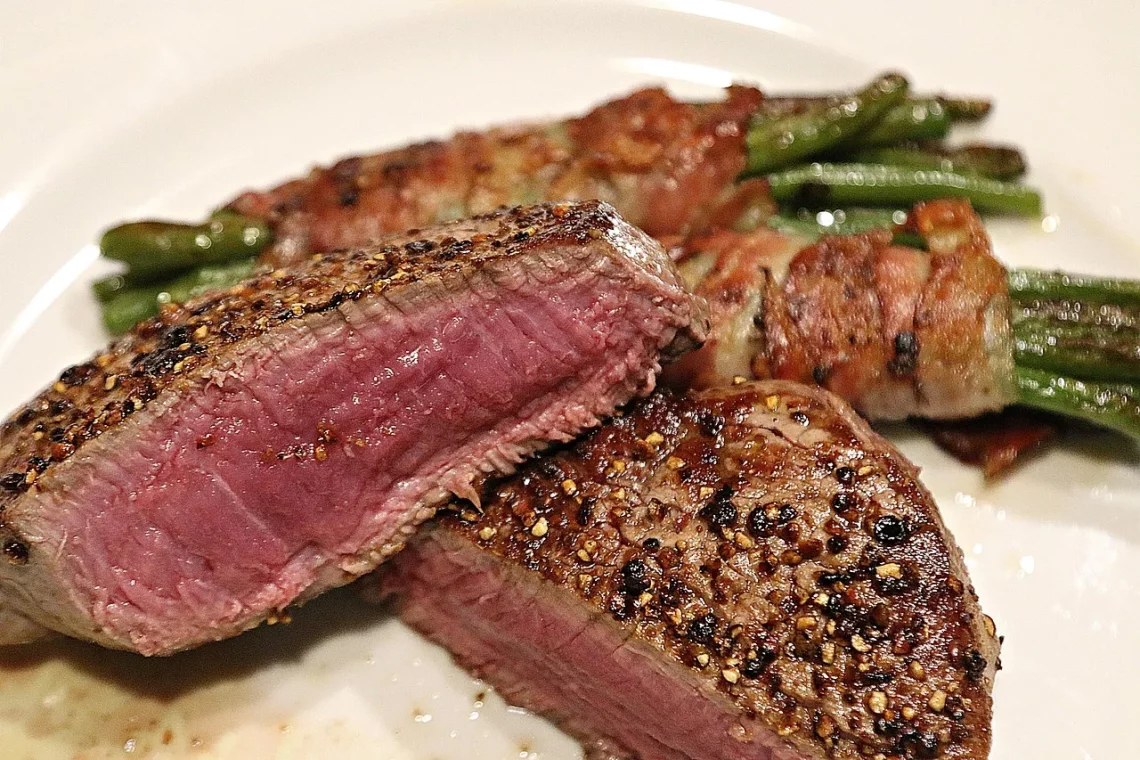
Discover the Highest Protein Steak for Your Next Meal
Steak has long been a favorite for meat lovers, providing not only a satisfying meal but also a source of essential nutrients. Among the various cuts available, certain types of steak stand out for their protein content, making them an excellent choice for those looking to boost their protein intake. The popularity of high-protein diets has surged in recent years, often linked to fitness goals and overall health. As a result, understanding the protein content in different types of steak can be beneficial for anyone looking to optimize their diet.
When it comes to choosing the right steak, factors such as flavor, tenderness, and, of course, nutritional value come into play. While many cuts of steak are rich in protein, some are particularly noteworthy for their high protein content relative to other cuts. This article delves into the world of steak, exploring the options available and helping you make informed choices for your next meal. Whether you’re a seasoned chef or a novice cook, knowing which steak to choose can enhance your culinary experience and support your nutritional goals.
Understanding Protein Content in Steak
When we talk about protein content in steak, it’s essential to recognize that different cuts of beef vary significantly in their protein levels. Typically, steak is derived from the muscles of cattle, which means that the protein content is influenced by the muscle’s function and location within the animal. The more a muscle is used, the tougher it tends to be, but it can also be higher in protein.
For instance, cuts from the loin and rib sections, such as tenderloin, ribeye, and sirloin, are generally higher in protein content and more tender. On average, a 3-ounce serving of cooked steak can provide anywhere from 22 to 30 grams of protein, depending on the cut. However, the nutritional profile can vary based on factors such as grade, preparation method, and whether any additional ingredients are used during cooking.
Another aspect to consider is the fat content in various cuts. While some may prioritize protein, others may also want to limit their fat intake. Cuts like flank steak and sirloin are leaner options, making them ideal for those who want a higher protein-to-fat ratio. Conversely, cuts like ribeye, though delicious and rich in flavor, tend to have more marbling, which can increase fat content.
It’s important to understand that steak is not just a source of protein but also provides essential vitamins and minerals. Beef is rich in B vitamins, particularly vitamin B12, which is vital for energy production and neurological function. Additionally, steak is a good source of iron, supporting healthy blood and muscle function. Hence, when you choose a high-protein steak, you’re also benefiting from these other nutritional components.
Top High-Protein Steak Cuts
When selecting a steak for its protein content, several cuts are considered top contenders. Among these, the top sirloin, flank steak, and tenderloin are often highlighted for their favorable balance of protein and flavor.
The top sirloin is a popular choice among health-conscious consumers. This cut is not only high in protein—offering around 28 grams per 3-ounce serving—but also relatively lean, with less fat than other cuts like ribeye. It’s versatile and can be grilled, pan-seared, or broiled, making it suitable for a variety of dishes. The flavor is robust yet not overpowering, making it an excellent option for marinades and seasonings.
Flank steak is another high-protein cut, typically containing about 25 grams of protein per 3-ounce serving. This cut is known for its rich flavor and slightly chewy texture, making it ideal for recipes that involve marinating and grilling. Flank steak is often used in stir-fries, fajitas, or served thinly sliced over salads. Due to its lower fat content, it’s a favorite among those looking to maintain a lean diet without sacrificing taste.
Lastly, the tenderloin, often considered the most tender cut of beef, offers around 26 grams of protein per 3-ounce serving. While it’s more expensive than other cuts, its melt-in-your-mouth texture and mild flavor make it a luxurious choice. Whether prepared as filet mignon or in a beef Wellington, tenderloin is a treat that can elevate any dining experience.
In addition to these cuts, others like the ribeye, while higher in fat, still provide a significant amount of protein and are highly sought after for their rich flavor. Ultimately, the best high-protein steak cut will depend on personal preferences regarding taste, texture, and dietary goals.
Cooking Techniques for Maximizing Protein and Flavor
How you prepare your steak can significantly impact both its flavor and nutritional profile. Different cooking methods can enhance the taste while preserving the protein content. Grilling, broiling, and pan-searing are popular techniques that allow for quick cooking while maintaining the integrity of the meat.
Grilling is a favorite method for many steak lovers. It not only adds a delicious char and smoky flavor but also allows excess fat to drip away, resulting in a leaner dish. A hot grill helps to sear the steak, locking in juices and flavors. When grilling, it’s essential to let the steak rest after cooking to allow the juices to redistribute, ensuring a moist and flavorful bite.
Broiling is another effective method that can produce a beautifully cooked steak with a crispy exterior. This technique involves cooking the steak under high heat, similar to grilling but from above. Broiling is excellent for thicker cuts, as it allows for even cooking and caramelization of the meat’s surface.
Pan-searing, on the other hand, involves cooking the steak in a hot skillet with a small amount of oil. This method is ideal for achieving a golden crust while keeping the inside perfectly cooked. Adding aromatics like garlic and herbs during the cooking process can enhance the flavor profile, making your steak experience even more enjoyable.
Regardless of the cooking method, it’s crucial not to overcook the steak, as this can lead to a loss of moisture and tenderness. Using a meat thermometer can help ensure that the steak reaches the desired level of doneness without sacrificing its quality.
Lastly, consider pairing your steak with sides that complement its flavor and nutritional value. Vegetables, grains, and legumes can create a well-rounded meal that not only satisfies your palate but also enhances your overall nutrient intake.
Choosing the Right Steak for Your Dietary Needs
When selecting a steak, it’s essential to consider not just the protein content, but also your dietary needs and preferences. For individuals focused on fitness and muscle-building, higher protein cuts like flank steak or top sirloin may be more appealing. Meanwhile, those seeking to limit fat intake might prefer leaner options.
For those following specific dietary plans, such as ketogenic or paleo diets, fatty cuts like ribeye may be favorable due to their higher fat content, which aligns with the macronutrient ratios of these diets. On the other hand, if you’re looking to maintain a balanced diet with moderate fat intake, cuts like tenderloin or sirloin may be ideal.
Additionally, consider the source of your meat. Grass-fed beef is often touted for its higher omega-3 fatty acid content and better overall nutritional profile compared to grain-fed beef. Understanding where your steak comes from can also influence your choice, as many consumers are becoming more conscious of ethical and sustainable farming practices.
Finally, don’t overlook the importance of seasoning and marinating your steak. While the meat itself is a significant source of protein, the right spices and herbs can enhance both its flavor and nutritional benefits. Experimenting with different marinades can also add variety to your meals, making it easier to incorporate high-protein steak into your diet regularly.
In conclusion, selecting the highest protein steak involves understanding different cuts, their nutritional profiles, and how to prepare them effectively. By making informed choices, you can enjoy delicious steak meals that contribute positively to your dietary goals.
**Disclaimer**: This article is for informational purposes only and does not constitute medical advice. Please consult a healthcare professional for advice tailored to your specific health needs.




